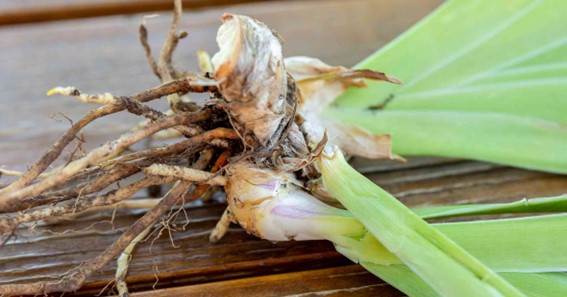Are you curious to know what is function of stem? You have come to the right place as I am going to tell you everything about function of stem in a very simple explanation. Without further discussion let’s begin to know what is function of stem?
What Is Function Of Stem?
In the world of plants, stems serve as one of the fundamental structures that play a crucial role in their growth, support, and overall functioning. While often overlooked, stems are essential for the survival and success of plants in various ecosystems. In this blog post, we will delve into the fascinating function of stems, exploring their significance and the diverse roles they play in plant life.
Structural Support
One of the primary functions of stems is to provide structural support to plants. Stems serve as the main framework that holds leaves, flowers, and fruits in an elevated position, allowing them to efficiently capture sunlight for photosynthesis. The stem’s strength and rigidity enable plants to stand upright, even in challenging environmental conditions.
Transportation Of Water And Nutrients
Stems function as conduits for the movement of water, minerals, and nutrients throughout the plant. Vascular tissues, including xylem and phloem, run through the stems, forming a network of vessels. Xylem carries water and dissolved minerals from the roots to the leaves, while phloem transports sugars and other organic compounds produced during photosynthesis to various parts of the plant.
Photosynthesis
Although leaves are the primary sites for photosynthesis, stems in certain plants also contribute to this vital process. Some stem tissues, such as the green stems of cacti or certain succulents, contain chlorophyll and are capable of carrying out photosynthesis. This allows plants to produce energy and carbohydrates even in the absence of leaves or during unfavorable conditions.
Storage Of Nutrients And Water
Stems can serve as storage organs for nutrients and water. In certain plant species, specialized stem tissues, such as bulbs, tubers, and rhizomes, accumulate reserves of carbohydrates, proteins, and other essential nutrients. These stored resources provide a source of energy during periods of dormancy or when environmental conditions are unfavorable for growth.
Reproduction And Propagation
Stems play a vital role in plant reproduction and propagation. They give rise to buds, which can develop into new shoots, leaves, or flowers. Stems also give rise to adventitious roots, enabling plants to propagate through vegetative reproduction. Cuttings taken from stems can be rooted to establish new plants, allowing for the propagation of desirable traits and genetic preservation.
Protection And Defense
Stems can serve as a protective barrier against herbivores, pathogens, and environmental stresses. Some plants have thorns, spines, or prickles on their stems, deterring herbivores from feeding on them. In addition, stems can undergo structural adaptations, such as thickening or lignification, to enhance their resistance to physical damage and environmental challenges.
Conclusion
The function of stems in plant life is multifaceted and vital for the survival and success of plants in diverse environments. From providing structural support and facilitating the transportation of water and nutrients to participating in photosynthesis, storage, reproduction, and defense, stems perform a range of critical roles. Understanding the significance of stems not only enriches our knowledge of plant biology but also highlights the remarkable adaptations and strategies that plants have evolved to thrive in their respective habitats.
Let’s find some more interesting topics like these here askcorran
FAQ
What Is The Function Of Stem Class 6?
Support: Primary function of the stem is to hold up buds, flowers, leaves, and fruits to the plant. Along with the roots, a stem anchors the plants and helps them to stand upright and perpendicular to the ground.
What Are The 4 Functions Of A Stem?
(i) It supports branches, leaves, flowers, and fruits. (ii) It transports water and minerals from the roots to the leaves and other parts of plants. (iii) It transports food from leaves to different parts of the plant. (iv) It holds the plant upright.
What Is The Function Of Stem Answers?
The main function of a stem in plants is that it helps in the conduction of water and minerals from the roots to the leaves and other parts of plants. It also provides support to branches, leaves, flowers, fruits, and buds of plants.
What Are 3 Main Functions Of A Stem?
It is responsible for carrying minerals, water, and glucose to different parts of the plant. When the stems are green, they may contain chloroplasts and perform photosynthesis. The stems can also be modified for food storage (tubers) and vegetative propagation (bear buds) as seen in potatoes.
What Are The Functions Of Stem Class 7?
The main function of a stem in plants is that it helps in the conduction of water and minerals from the roots to the leaves and other parts of plants. It also provides support to branches, leaves, flowers, fruits, and buds of plants.
What Is The Main Function Of The Stem Quizlet?
In general, stems ahve three important functions: They produce leaves, branches and flowers; they hold leaves up to the sunlight; and they transport substances between roots and leaves.
I Have Covered All The Following Queries And Topics In The Above Article
Function Of Stem For Class 6
What Is Function Of Stem In Plants
What Is Function Of Stem Class 9
What Is Function Of Stem Class 7
What Is Function Of Stem Class 11
What Are The 5 Functions Of Stems?
What Is The Function Of Stem Short Answer
Function Of Stem For Class 3
What Is Function Of Stem
What is stem for Class 6







